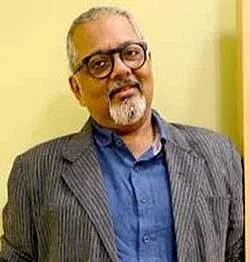Leaders in the sector talk about trends that the year witnessed and the noteworthy campaigns they executed
This has been a challenging year for the media industry. Radio too saw a downfall in ad spends at the onset of the pandemic as most markets were closed. But when the going got tough, the sector got back into the groove, and not only did it bounce back in the festive season with over 75% recovery level but also came up with groundbreaking work in the digital space. FM channels either launched flagship digital properties or partnered with music OTT platforms to stay in tune with their listeners.
e4m spoke to radio industry leaders to understand how this challenging year has been for them and the new avenues they ventured into.
Trends that developed due to the pandemic market environment
Abraham Thomas, CEO, Reliance Broadcast Network Limited, shared, “The transformation of radio into a complete audio entertainment platform is the one trend that we strongly believe will dominate the audio industry. This year, the advancements of digitalization have enabled the brands to build a holistic audio entertainment experience for listeners as well as for brands to leverage. For the coming year, we are certain that there will be an expansion in the audio space with radio venturing into avenues that harness the power of the medium. This will include new-age offerings for the brand, right from creating podcasts to gamification to interactions through chatbots to enabling social commerce.”

Ashit Kukian, CEO, Radio City said, “There is no doubt that radio has been one of the most trusted and reliable mediums and increase in listenership (82%) during the lockdown is a testimony to the same. FM channels emerged as the second most credible source of information for the masses. This was also a result of lockdown rules and Covid-related risks that made physical delivery of print papers difficult. The maximum listenership came in from tier-2 and tier-3 cities due to which several brands shifted their focus of advertising from tier-1 markets to smaller centres.”
Kukian added, “With the impact of the pandemic on the job sector and the telecom sector moving to 5G, many new small and medium businesses have been launched. The growth of start-ups and small and medium enterprises will see a surge in the coming year. In this year, these businesses have invested in radio and this trend will continue post-Covid as well.”

B Surendar, COO & Director, Red FM network, noted the key trends of the year.
Peak-Covid period (Apr-Sept’20) :
- RJs and other employees handling key functional areas learnt to work from home impactfully
- Radio industry rose to the occasion and delivered quality music and non-music content using technology. Helped create big-time awareness on health, social behaviour, etc, providing infotainment to audience through interaction with authorities, celebrities, etc
- Overall listenership, as well as at-home listening, jumped up as radio’s easy-to-access, free-of-cost entertainment proved too attractive a media option to people who were mostly stuck at their home
- Media is a part of the service industry and ad spends being a top-up budget, advertising revenues, which are our bread and butter, were greatly affected when the business of various industries/clients got adversely impacted. As a consequence, our yields also came under pressure
Post-lockdown period (Oct’20 onwards):
- For a large network like Red FM present in nearly 70 cities, the recovery has not been uniform geographically or in terms of business from advertising categories
- Tier 2 & 3 stations have recovered faster than the ones in metros. The bigger cities which were more affected by Covid are still battling issues like low demand high costs, media fragmentation, reduction in yields, etc. but on a lesser scale compared to the lockdown period in our country
- Advertising categories like Retail, Travel, Hospitality, Entertainment, etc are taking more time to recover as compared to BFSI, PSUs, Auto, Real Estate, etc
- More of our employees are working from the office across the country but after taking all possible precautions

Preeti Nihalani, Chief Revenue Officer, Mirchi, listed the following trends:
- Hit hard by the pandemic, advertisers demand more from media houses, instead of just being a platform; they seek solutions from us. This trend started much before the pandemic and now we see more and more demands for providing 360-degree solutions
- Storytelling vs advertising – Plain FCT campaigns are out of fashion now. More and more brands want to do storytelling and create connections with the audiences at a deeper level
- Influencers for campaigns – Brands are asking for jocks and other social media influencers to advocate brand connection and sometimes even product usage
- Establishing engagement with audiences – Karaoke app Smule came to us intending to increase engagement on their platform. With that objective, we created an activity where we asked friends to come together and jam on their platform
- Hyper-local and multilingual: Delhi is not Benares. In times of pandemic, each city was impacted differently. Every state had different rules. In these times, brands also used different strategies and different communication for different cities. This trend will continue as the recovery is also happening at a different pace
- Emergence of new advertising categories: There is a new set of advertisers across mediums. Many companies from the ed-tech, online gaming, and OTT space have found a strong foot during this pandemic. When there is full recovery, we expect old categories to be fully back and these new categories to help grow the industry
Noteworthy campaign, initiative or platform launched this year
Talking about the clutter-breaking campaigns that they did this year, Thomas shared, “Amongst the many campaigns that we launched this year, our noteworthy campaigns were the launch of BRO (BIG Radio Online), through which we forayed in the space of web radio. BRO serves as the perfect platform for the young adults who seek content that is entertaining as well as motivating.”
Sharing the new initiatives, Thomas said, “This year, we also expanded our footprint and reached out to a wider set of listeners via immersive touchpoints. We have collaborated with leading audio streaming platforms like Spotify and
aawaz.com because of which Big FM’s most-loved shows and marquee properties are now available to a global audience. The partnership with Spotify enables its users to access more than 15,000 minutes of BIG FM’s content spread across 13 marquee shows and 1,240 episodes.”
Radio City’s Kukian remarked, “Taking forward the ethos of ‘atmanirbharta’ propagated by the government, we were the first radio channel to promote ‘vocal for local’ with Radio City Bazaar. Launched in June, the initiative focused on promoting homegrown businesses. The campaign has had more than 600 clients on board to promote their business through the campaign. Through this initiative, Radio City stations across the nation have been allowing these businesses to talk about their offerings on-air and to give them a credible platform to build awareness about their business propositions.”
Surendar commented, “From an advertiser point of view, the exclusive and radio-centric campaign initiative we did with Muthoot Gold Loan featuring some empowering stories narrated by Amitabh Bachchan tops the list as that happened at the time of peak lockdown.”
Nihalani commented, “We have launched multiple web series under the ‘Mirchi Play’ banner. At Mirchi Play, we create multi-lingual, short format, fiction/non-fiction original content. This year we launched web series in Tamil, Telugu, Marathi, Gujrati, Punjabi, and Hindi. We see this business growing multi-fold in the coming year with our content going on multiple platforms. We also launched Season 3 of ‘What Women Want - Kareena Kapoor Chat Show’ and had Dabur as primary sponsor third year in a row.”
Major brands that invested this year
According to Thomas, “Already on the path of recovery, the radio industry is witnessing a sizable growth in ad spends as the brands are leveraging the strengths of the medium. Categories like BFSI, FMCG, Automobile, Pharma, and Healthcare have been the first ones to get active. At BIG FM, we have also seen good engagement from the Real Estate & Construction category. For the festive season, brands from sectors like Electronics, Steel Industry, Oil Refinery and Jewellery also came on board.”
Thomas said, “We have reached about 90% of pre-Covid times in volume as well as market and about 70% of the value.”
Kukian stated, “We’ve worked with brands like Life Insurance Corporation Of India, State Bank Of India, Samsung India Electronics Pvt. Ltd., Hyundai Motor India Ltd. Gujarat Cooperative Milk Marketing Federation Ltd. and many more.”
Surendar remarked, “Some of the top advertisers of this year include Maruti Suzuki, LIC, KP Group, Pay TM, Orissa Tourism, Hyundai, SBI, RBI. They did both commercial and CSR messaging through radio to reach out to audiences. Compared to last year, the volumes grew in January – November’20 period. This list is growing as we talk.”
A trend forecast going into 2021
Thomas shared, “With the advancement of digitalization in the radio industry, we see radio expanding its wings and strategically entering into broader avenues such as gamification, chatbots, social commerce, and others. The seamless integration into the digital space has opened many possibilities for the radio industry to venture into newer avenues where the emergence of audio will take precedence across all innovations. We believe that this will be dominating the industry and become a leading trend in the coming year.”
Kukian shared, “A trend we noticed this year and forecast for 2021 would be a growth in radio in terms of listenership and business from the Tier2 and Tier 3 markets. Due to radio’s reach and credibility, brands will reach out to the audiences in these markets through radio. This will be coupled with the increase in usage of radio by local players to amplify their brand message.”
Sharing his perspective, B Surendar said, “Our on-going new business development efforts have helped attract a whole lot of new advertisers and categories from national and regional markets into Red FM and radio in this crisis year and hopefully the trend will grow bigger.”
Other focus areas for Red FM will be moving away from vanilla FCT and providing Radio + Digital + On ground (wherever possible) solutions to the advertisers, leveraging our influencers i.e RJs and their strong rapport with celebrities at large and the film industry across multiple languages. “With some important states going to elections, some spurt in government and political advertising will also be expected. Lastly, podcasting, content syndication and other new media initiatives will gain prominence,” shared B.Surendar.
Nihalani concluded us with a positive message, saying, “2021 should be a recovery year for radio. Advertisers believe strongly in the core strengths of radio and, in tough times, when brands do more tactical and hyperlocal advertising, the radio will only gain more importance.”



 Ashit Kukian, CEO, Radio City said, “There is no doubt that radio has been one of the most trusted and reliable mediums and increase in listenership (82%) during the lockdown is a testimony to the same. FM channels emerged as the second most credible source of information for the masses. This was also a result of lockdown rules and Covid-related risks that made physical delivery of print papers difficult. The maximum listenership came in from tier-2 and tier-3 cities due to which several brands shifted their focus of advertising from tier-1 markets to smaller centres.”
Kukian added, “With the impact of the pandemic on the job sector and the telecom sector moving to 5G, many new small and medium businesses have been launched. The growth of start-ups and small and medium enterprises will see a surge in the coming year. In this year, these businesses have invested in radio and this trend will continue post-Covid as well.”
Ashit Kukian, CEO, Radio City said, “There is no doubt that radio has been one of the most trusted and reliable mediums and increase in listenership (82%) during the lockdown is a testimony to the same. FM channels emerged as the second most credible source of information for the masses. This was also a result of lockdown rules and Covid-related risks that made physical delivery of print papers difficult. The maximum listenership came in from tier-2 and tier-3 cities due to which several brands shifted their focus of advertising from tier-1 markets to smaller centres.”
Kukian added, “With the impact of the pandemic on the job sector and the telecom sector moving to 5G, many new small and medium businesses have been launched. The growth of start-ups and small and medium enterprises will see a surge in the coming year. In this year, these businesses have invested in radio and this trend will continue post-Covid as well.”
 B Surendar, COO & Director, Red FM network, noted the key trends of the year.
Peak-Covid period (Apr-Sept’20) :
B Surendar, COO & Director, Red FM network, noted the key trends of the year.
Peak-Covid period (Apr-Sept’20) :
 Preeti Nihalani, Chief Revenue Officer, Mirchi, listed the following trends:
Preeti Nihalani, Chief Revenue Officer, Mirchi, listed the following trends:


